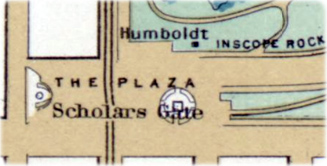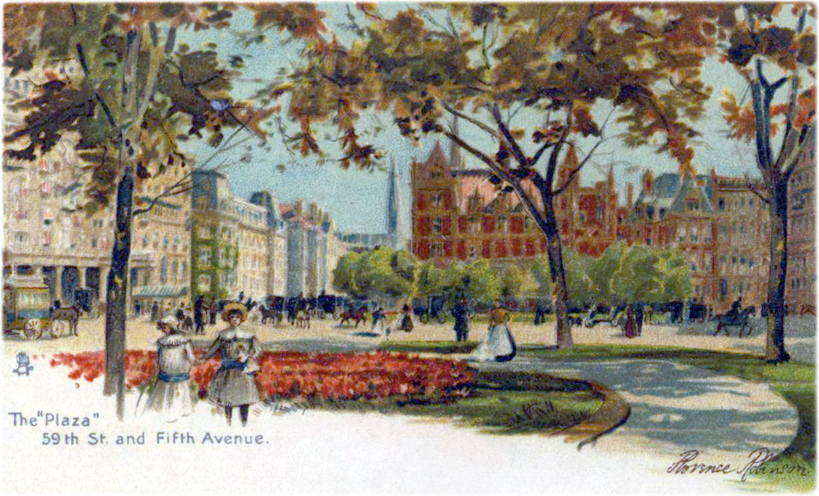
Grand Army Plaza in Manhattan
The Grand Army Plaza in Manhattan is located next to the Central Park's southeast entrance, the Scholar's Gate. It lies between 58th Street and 60th Street at Fifth Avenue and it is bisected by 59th Street. The southern section contains the Pulitzer Fountain and the northern section contains the General Sherman Monument. The Grand Army Plaza is officially part of the Central Park's 843-acre landscape. There is another Grand Army Plaza in Brooklyn.
The inception of the plaza is connected with that of Central Park and evolved from the rectangular cut in the Park at the northwest corner of Fifth Avenue and 59th Street which Frederick Law Olmsted and Calvert Vaux had incorporated in their 1858 "Greensward Plan". The Plaza was part of the Scholar's Gate (see illustrations below) and did not extend south to 58th Street. This was done some time prior to 1868.
The area was known as The Plaza since the 1870s or before. It was called Central Park Plaza by the Harper's Weekly, May 17, 1890. The journal stated that "The Plaza is to New York largely what Hyde Park Corner is to London, and the entrances to the Bois de Boulogne, the Thiergarten, and the Prater are respectively to Paris, Berlin, and Vienna". The east side of Fifth Avenue, however, was occupied by a string of low wooden houses, or sheds. In the late 19th century, The Plaza attracted great hotels, like Plaza Hotel, Savoy and Netherland.
The gilded-bronze equestrian statue of William Tecumseh Sherman (1820-1891), by sculptor Augustus Saint-Gaudens (1848-1907), was dedicated in 1903. A new design for The Plaza was made by the firm Carrère and Hastings and its construction was completed in 1916.
A fountain was planned for The Plaza since 1863. It was installed in 1916. The Pulitzer Fountain is topped with a bronze statue of Pomona, the Roman goddess of abundance, designed by Karl Bitter, completed by Isidore Konti and installed in the same year. Joseph Pulitzer (1947-1911) had left money for a fountain to be erected on the Plaza.
It was named "Grand Army Plaza" on February 10, 1923 by a resolution of the Board of Aldermen, after the Grand Army of the Potomac, a Union army created in 1861 and disbanded in 1865. On July 23, 1974, the New York City Landmarks Preservation Commission designated the Grand Army Plaza as a New York City scenic landmark.
The Plaza was renovated in 1935, 1990 and in 2013.

|
Copyright © Geographic Guide - Historic places in NYC. |
The Plaza, looking south, in a vintage postcard published by Raphael Tuck & Sons, before 1903, when General Sherman Monument was unveiled.
Grand Army Plaza about 1925, with General Sherman Monument in the foreground. Plaza Hotel is on the right. Vanderbilt Mansion and Heckscher Building (Crown Building) are in the background (vintage postcard by Detroit Photographic Company).
The two sections of The Plaza, looking north, in a vintage postcard by Detroit Publishing Co., in 1920. The northern part, with the Sherman Monument, and the southern part, with the Pulitzer Fountain. Savoy and Netherland hotels are on the right. Plaza Hotel is to the left, out of the picture.
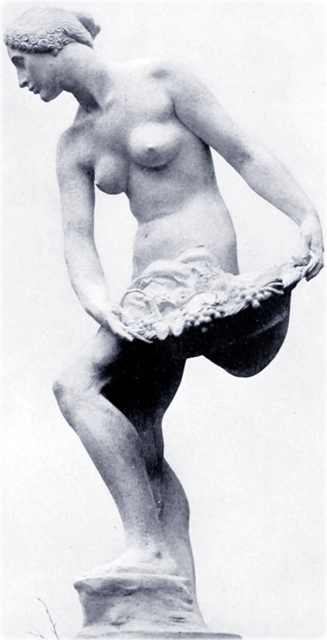
Fragment the Plan of New York City in 1867, published by Mathew Dripps. The northern section of the current Grand Army Plaza is indicated as part of the Scholar's Gate.
On the right, the golden Sherman Monument in the 1990s, with the Metropolitan Club in the background.
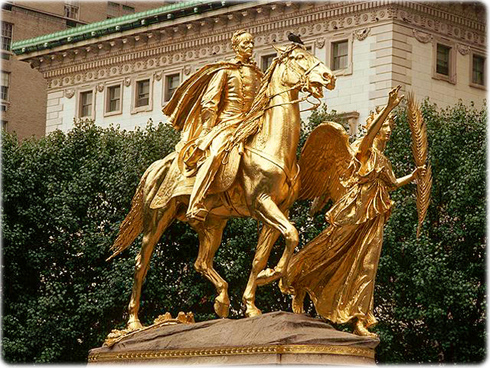
Fragment the Hinrichs' Guide Map of the Central Park, 1875, showing The Plaza with its two sections, indicated as part of the Scholar's Gate.
Below, part of Grand Army Plaza in September, 2016, looking south, with Fifth Avenue on the left (credit: Julienne Schaer/NYC & Company).
The plaster model of Pamona ready to scatter a basket of fruits, made by sculptor Karl Bitter (Karl Bitter - A Biography by Ferdinand Schevill, 1917). After his death in 1915, the final sculpture was made by Isidore Konti and installed on top of the Pulitzer Fountain in 1916.
Below, the area around The Plaza in an illustration by George Schlegel. Copyright 1873.
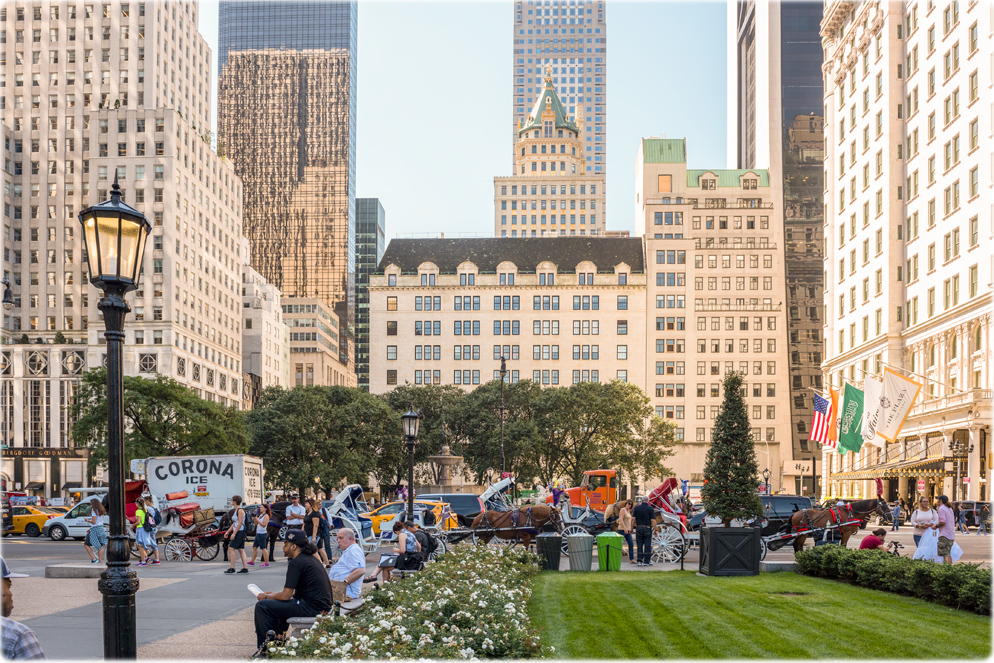
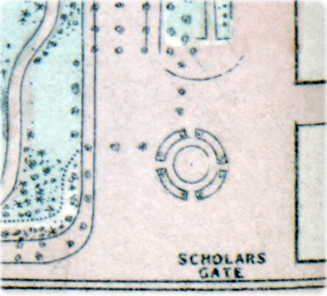
Grand Army Plaza in Manhattan
